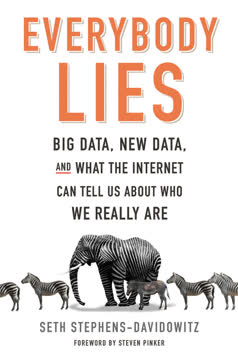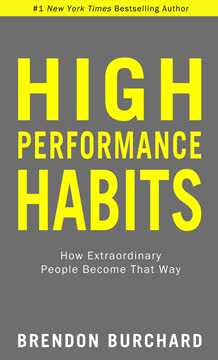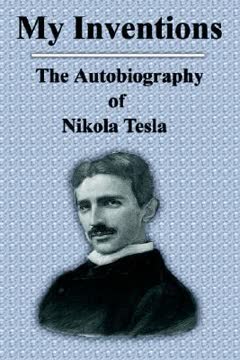つの重要なポイント
1. 資源を追い求めるのではなく、持っているものを最大限に活用する
資源のより良い利用 = より良い結果を得る
追い求める心を捨てる。 多くの人々や組織は、より多くの資源を持つことが自動的により良い結果をもたらすと信じています。この「追い求める」心は、常に不満と非効率を生み出します。代わりに、既存の資源を最大限に活用する「伸ばす」心を採用しましょう。
創意工夫を受け入れる。 成功した個人や企業は、常に新しいものを求めるのではなく、既に持っているものを創造的に活用することで繁栄しています。例としては以下のようなものがあります:
- ディック・ユングリングがビール帝国を築き上げ、大手競合が失敗する中で成功
- ロバート・ロドリゲスが低予算で批評家に絶賛される映画を制作
- MLB投手のダニエル・ノリスがバンに住み、持っているものを感謝する
不足しているものに焦点を当てるのではなく、持っているもので何ができるかに視点を変えることで、新しい成功と満足の可能性が開かれます。
2. 制約を受け入れて創造性と革新を促進する
制約は実際に創造性を促進することがある。
制約は創意工夫を生む。 制約に直面すると、人々はより創造的で工夫を凝らすようになります。この逆説的な原則は、アーティスト、科学者、起業家によって実証されています。
制約を通じた創造性の例:
- クロード・モネが色のパレットを制限することで芸術的な突破口を開いた
- ドクター・スースが「グリーン・エッグス・アンド・ハム」を50の異なる単語だけで書いた
- 研究者が、欠乏の心が新しい問題解決をもたらすことを発見
制約を障害と見るのではなく、革新の触媒と見なしてください。時間、予算、資源の制約を、異なる考え方をする機会として受け入れ、独自の解決策を見つけましょう。
3. 心理的所有感を育てて隠れた可能性を引き出す
私はいつも「店のオーナーですか?」と聞かれる。
所有感を育てる。 人々が自分の仕事に対して強い心理的所有感を持つと、よりエンゲージメントが高まり、創造的で生産的になります。この原則は、実際の法的所有権に関係なく適用されます。
心理的所有感を育てる方法:
- 従業員に自律性と意思決定権を与える
- プロジェクトや成果に対する個人的な投資を奨励する
- 創造的な思考と問題解決を認識し、報酬を与える
研究によれば、心理的所有感は仕事の満足度を高め、財務パフォーマンスを向上させることが示されています。人々が自分の仕事に投資していると感じる環境を作ることで、組織は隠れた可能性を引き出し、より良い結果を得ることができます。
4. 多様な経験を積んで問題解決能力を向上させる
私のアイデアはただ浮かんでくる。説明するのは難しいが、すべて直感的だ。
マルチCルールを受け入れる。 多様な経験、つまり「マルチコンテクスト」(マルチC)知識を育むことで、問題解決能力と創造性が向上します。このアプローチにより、個人は一見無関係な分野の間に関連性を見出し、課題に対して新しい解決策を適用することができます。
多様な経験の利点:
- 複数の角度から問題にアプローチする能力の向上
- 革新的な思考能力の増加
- 変化する環境への適応力の向上
マルチC思考者の例:
- ストーリー・マスグレイブ:農夫からメカニック、宇宙飛行士、外科医へ
- レオナルド・ダ・ヴィンチ:アーティスト、発明家、科学者、エンジニア
新しい経験を積極的に求め、異なる分野について学び、幅広い興味を育てることで、資源を最大限に活用し、複雑な問題を解決する能力を強化しましょう。
5. まず行動し、後で計画する:即興の力
何をすべきか分からなくても、とにかく始めるしかなかった。
自発的な行動を受け入れる。 計画にはその場所がありますが、過度の計画は麻痺と機会の喪失を招くことがあります。行動志向のアプローチを採用することで、リアルタイムで学び、適応することができます。
即興の利点:
- 変化する状況に迅速に対応する能力
- 予期しない機会を捉える能力の向上
- 直接的な経験を通じた学習の強化
成功した即興の例:
- ロバート・ロドリゲスの映画制作アプローチ:直感に従い、その場で適応
- ジャズミュージシャン:リアルタイムで互いに反応し、独自のパフォーマンスを創り出す
即興の心を育むために:
- 詳細な計画なしでプロジェクトを開始する
- ミスを学習の機会として受け入れる
- 迅速なプロトタイピングと反復を実践する
6. ポジティブな期待を設定して自己成就予言を作り出す
人々が状況を現実と考えると、それに基づいて行動し、未来を変える現実的な結果をもたらす。
期待の力を活用する。 自分自身や他人に対する期待は、結果に大きな影響を与えることがあります。この現象はピグマリオン効果として知られ、ポジティブな期待がパフォーマンスと結果を向上させることを示しています。
ピグマリオン効果の重要な側面:
- 教師の期待が生徒のパフォーマンスに影響を与える
- マネージャーの期待が従業員の生産性を形作る
- 自己期待が個人の達成に影響を与える
ポジティブな期待を活用するために:
- 自分自身や他人に対して高いが達成可能な期待を意識的に設定する
- これらの期待を明確かつ支援的に伝える
- 期待を満たすための資源とサポートを提供する
ポジティブな期待の環境を育むことで、個人や組織は隠れた可能性を引き出し、より良い結果を達成することができます。
7. 意外な資源を組み合わせて画期的な解決策を生み出す
持っているものを活用する。
予期しない組み合わせを探す。 革新はしばしば、一見無関係な資源やアイデアを組み合わせることから生まれます。従来の組み合わせを超えて見ることで、個人や組織は独自の解決策や機会を創り出すことができます。
成功した意外な組み合わせの例:
- ロイ・チョイの韓国BBQタコス:韓国料理とメキシコ料理の融合
- Airbnb:空き部屋と短期レンタルの組み合わせ
- プレイドー:壁紙クリーナーを子供のおもちゃとして再利用
革新的な組み合わせを促進するために:
- 異なる分野の協力を奨励する
- 異なるアイデアを結びつけるアナロジカルシンキングを実践する
- 資源の制限と使用に関する仮定に挑戦する
予期しない組み合わせを積極的に探すことで、既存の資源から新しい価値を引き出し、画期的な解決策を創り出すことができます。
8. 過度の伸ばしの落とし穴を避ける
想像力豊かなクリエイティブな人が、無限の予算を持つ才能のない大物よりも、常に良い映画を作ることができる。
伸ばすことと慎重さのバランスを取る。 資源を伸ばすことは強力ですが、過度の伸ばしから生じる一般的な落とし穴を避けることが重要です。
過度の伸ばしの潜在的な危険:
- 効果がなくなるほどの過度の節約
- あまりにも多くの多様な経験を追求することで焦点を失う
- 直感に過度に依存し、ミスから学ばない
- 失望を招く非現実的な期待を設定する
効果的に伸ばすために:
- 節約と必要な投資のバランスを保つ
- コアの強みを補完する経験に焦点を当てる
- 直感と意図的な学習と反省を組み合わせる
- 挑戦的だが達成可能な期待を設定する
これらの潜在的な落とし穴に注意を払いながら、伸ばす力を活用し、その危険を避けることで、持続可能な成功と満足を得ることができます。
最終更新日:
FAQ
What's Stretch: Unlock the Power of Less - and Achieve More Than You Ever Imagined about?
- Core Concept of Stretching: The book focuses on "stretching," which is about maximizing existing resources rather than acquiring more. This approach can lead to greater success and satisfaction.
- Chasing vs. Stretching: Author Scott Sonenshein contrasts a "chasing" mindset, which seeks more resources, with a "stretching" mindset that leverages what is already available.
- Real-Life Examples: The book includes stories like Dick Yuengling's brewery success to illustrate how limited resources can lead to extraordinary outcomes.
Why should I read Stretch by Scott Sonenshein?
- Practical Advice: The book offers actionable insights for cultivating a stretching mindset in personal and professional contexts, helping readers use their resources more effectively.
- Timely Relevance: In a world focused on acquiring more, this book provides a refreshing perspective on resourcefulness and satisfaction.
- Empowering Mindset Shift: It empowers readers to see opportunities in constraints, fostering creativity and resilience for improved performance and happiness.
What are the key takeaways of Stretch?
- Embrace Resourcefulness: Success often comes from how we use what we have rather than what we lack, leading to innovative solutions and personal growth.
- Shift from Chasing to Stretching: Moving away from a chasing mentality can enhance satisfaction and prevent burnout, while a stretching mindset fosters fulfillment.
- Expectations Matter: Beliefs and expectations significantly influence performance and outcomes, with high expectations leading to better results.
What are the best quotes from Stretch and what do they mean?
- “Having More Resources = Getting Better Results”: This quote challenges the misconception that more resources directly lead to better outcomes, emphasizing effective use of existing resources.
- “Better Use of Resources = Getting Better Results”: Highlights the core principle of stretching, encouraging readers to rethink their approach to resource management.
- “You have to act first before inspiration will hit”: Illustrates the importance of taking action rather than waiting for the perfect moment, reinforcing progress through doing.
What is the difference between a chasing mindset and a stretching mindset in Stretch?
- Chasing Mindset Defined: Focuses on acquiring more resources, often leading to dissatisfaction and burnout, creating a cycle of wanting more.
- Stretching Mindset Defined: Encourages maximizing the potential of existing resources, fostering creativity, innovation, and fulfillment.
- Impact on Performance: Those with a stretching mindset often achieve better results by leveraging available resources for unique solutions.
How can I apply the principles of Stretch in my daily life?
- Identify Existing Resources: Take stock of your skills, time, and connections, and think creatively about how to use them for new opportunities.
- Set High Expectations: Cultivate a belief in your potential and set high expectations to inspire yourself and others to achieve more.
- Embrace Constraints: View limitations as opportunities to innovate, sparking creativity and leading to unexpected solutions.
How does Stretch address the concept of psychological ownership?
- Definition of Psychological Ownership: Describes the feeling of possessiveness over resources, empowering individuals to take initiative and be resourceful.
- Impact on Performance: A sense of ownership leads to more effort and creativity, resulting in better outcomes and job satisfaction.
- Cultivating Ownership: Foster an environment that encourages psychological ownership by allowing decision-making and risk-taking.
What role do expectations play in achieving success according to Stretch?
- Expectations as Self-Fulfilling Prophecies: Expectations significantly influence outcomes, with high expectations leading to improved performance.
- Positive Prophecies: Creating positive expectations motivates individuals to strive for success, applicable in personal and professional contexts.
- Influence of Others’ Expectations: Expectations from authority figures shape beliefs about capabilities, highlighting the importance of a supportive environment.
How does Stretch suggest overcoming complacency in successful individuals or organizations?
- Recognizing Change: Stay aware of environmental changes to prevent stagnation, continuously adapting to evolving circumstances.
- Encouraging Innovation: Foster a culture of innovation by encouraging experimentation and risk-taking to stimulate growth and creativity.
- Setting New Goals: Regularly set challenging goals to push beyond comfort zones, reigniting motivation and driving progress.
What exercises does Stretch suggest to strengthen a stretching mindset?
- Resource Inventory Exercise: List current resources and brainstorm ways to utilize them more effectively, identifying untapped potential.
- Expectation Setting: Set high expectations for yourself and others, reflecting on past successes and envisioning future achievements.
- Constraint Embracement: Take on challenges with limited resources to practice stretching, setting goals that require creative problem-solving.
How does Stretch suggest overcoming the injuries from overstretching?
- Avoiding Cheapskate Mentality: Warns against excessive frugality that harms quality and morale, advocating for balanced resource management.
- Navigating Trade-Offs: Provides strategies for recognizing and bridging trade-offs, finding synergies between competing demands.
- Learning from Mistakes: Emphasizes learning from failures, encouraging a growth mindset that views challenges as opportunities for improvement.
What are some examples of stretching in action from Stretch?
- Dick Yuengling’s Brewery: Transformed his family brewery by maximizing existing resources, leading to significant growth and success.
- Robert Rodriguez’s Filmmaking: Used limited resources creatively to produce El Mariachi, launching a successful Hollywood career.
- Jenny Dawson’s Chutney Business: Created value from overlooked resources by turning discarded produce into gourmet chutneys, addressing food waste and empowering individuals.
レビュー
『ストレッチ』は賛否両論の評価を受けており、平均評価は5点満点中3.66点である。多くの読者は、本書の資源活用と手持ちのものを最大限に活かすというメッセージを高く評価し、感動的で実用的だと感じている。著者の文体や例の使い方も概ね好評である。しかし、一部の批評家は内容が繰り返しで冗長すぎる、または深みが欠けていると感じている。いくつかのレビューでは、本書の核心的なアイデアはもっと簡潔にまとめられるべきだと指摘されている。それにもかかわらず、多くの読者は創造性、問題解決、個人の成長に関する本書の視点に価値を見出している。
Similar Books














